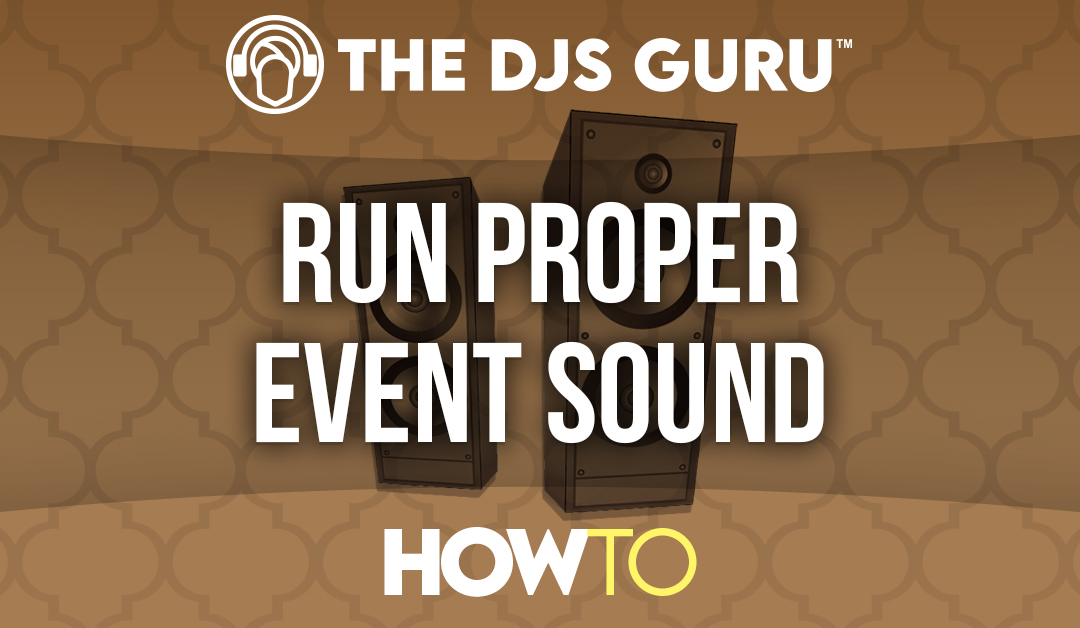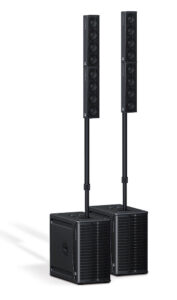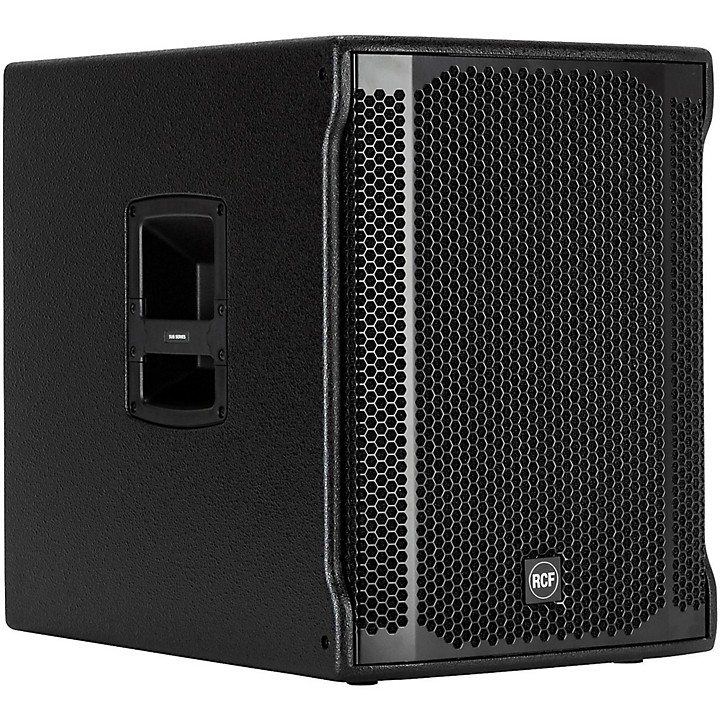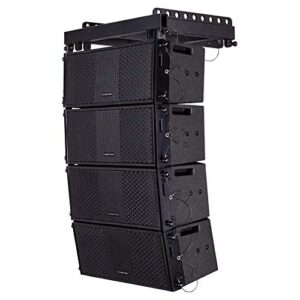How To Run Proper Event Sound With Professional DJ Speakers
One size fits all is a great concept – in theory. When it comes to event sound, however, it falls a bit short. In reality, there are too many unique situations for one single speaker setup to adequately cover. Every space is different. Even though we want one system to handle it all, it simply can’t. In this article, we’re going to cover the best practices for running proper event sound. We’ll talk about how to properly look at an event and decide which sound “tools” we will bring and what will be the best for the job: from a selection of professional DJ speakers and music equipment.
Every music event is unique
Just like every DJ is different, every single event (even if it takes place at the same venue) is unique. A dozen variables can change from one weekend to the next. If you fail to take into account these variables, you may be showing up inadequately prepared.
The variable that most people consider when it comes to choosing event sound is crowd size. 50 guests? 100? 500? Understanding that larger crowds require bigger, more powerful speakers is simple. Another common factor is room size. Small ballroom vs large gymnasium is a simple comparison. But don’t be too quick to base your speaker selection on these factors alone.
Other things to consider (that are much more often overlooked) include the ratio of guests to room size. 50 people in a small backyard require different sounds from 50 guests in a large hotel ballroom. You should also consider your setup location. Are you on the same level as the crowd or on a stage? Are they in stadium seating? Don’t forget to consider the music that will be played. Will it be a string quartet or a hip-hop-heavy DJ set? The event type itself is also important. Wedding ceremonies required different sound systems from large school dances. Wedding clients may care more about aesthetics than rock band fans.
As you can see, there is much more to consider for proper event sound than crowd size alone.
Different speakers have different strengths
Above all else, it’s important to precisely define the type of event you are providing sound for (make sure to read the previous section). Know how big the event space is, how many people are attending, what kind of music is being played, where people are positioned, what volume levels are expected, etc. Then, you’ll begin to choose your speaker setup based on these factors. Below, we’ll talk about a few different PA speaker types and where each might fit in.
Proper event sound equipment – traditional speaker cabinets
When most people think of a “PA speaker,” this is what they think of. They most often consist of a wood or tough plastic cabinet containing two drivers, a woofer, and a tweeter. They can be passive (requiring an external amplifier) or active (amplifier built-in). Though their components, amplifier power, and cabinets can all be very different, at their core these speakers are a very tried and true design. While we know there isn’t a universal speaker, this design is probably as close as you’ll get.
Traditional speaker cabinets are called “point source” – sound radiates straight out from the front of the speaker in the direction it is pointing. Lower frequencies are more omnidirectional (spread in all directions) while high frequencies tend to travel in a straight line. Most PA speakers utilize a horn around the tweeter, which amplifies and directs the sound. These speakers have a wide horizontal and vertical dispersion. This means the sound spreads out across a large area. This ensures maximum coverage with the fewest amount of boxes. However, it does mean sound can become muddy when multiple speakers are used.
There are seemingly endless variations on the standard PA speaker. Some have built-in mixers for controlling the levels of microphones and audio sources. These are great for mixing a guitarist and a vocalist for a cocktail hour. Some can be set on the ground and used as monitors.
Battery-powered speakers
One other variation of the traditional PA speaker is the battery-powered version. Thanks to improving battery technology, speakers are more compact than ever. Battery-powered versions of traditional speakers can be used anywhere, no outlet is required. Remote wedding ceremonies, cocktail hours in separate locations, and dance parties by the pool are all easier with battery-powered systems like the Mackie Thump GO, American Audio APX12, and Maui 5 GO. These systems give you hours of cord-free charge and are easier and simpler to set up than their corded brethren. When you need maximum portability, go with a battery-powered speaker.
Best used for Professional Music Events
Traditional speaker cabinets have a wide variety of uses, from small parties to large corporate events. Generally, you’re going to want to compare different models’ rated dB or SPL (volume) and the frequency extension (how low the speaker can go). Smaller versions with 8″ woofers are compact enough for wedding ceremonies and speaking engagements. Larger versions with 15″ woofers deliver more punch for dances. A 12″ woofer is a nice middle-of-the-road size for the largest number of applications. A traditional speaker will work for most applications, but be wary of using multiples for large rooms. When crowd sizes get very large, it might be best to look at other options like line arrays. Also, if looks are paramount (i.e. weddings), it may be worth looking at column arrays.
Proper event sound – column array speakers
Column array speakers have become all the rage in the mobile DJ space. These speakers have an unconventional design, with many smaller speaker drivers arranged in a line. These drives are positioned on a pole and usually placed above a low-end driver, or subwoofer. Arranging the speaker driver in this manner offers a few advantages. The biggest of these is a wider horizontal dispersion and a lower vertical dispersion. This means more of the sound is being spread across the room and less is being wasted on the ceiling and floor. A pair of speakers can cover a wider area than a pair of traditional speaker cabinets. Additionally, having a dedicated subwoofer coupled to the floor increases the low-end power. It also reduces distortion with the mid and high frequencies.
Best used for:
Column arrays offer a very sleek, modern design aesthetic that is perfect for more high-end functions. They have become common at weddings and corporate events throughout the world. White versions, in place of the standard black, look even more at home at luxurious events. The sound is also full and balanced. For DJs setting up in different venues every week, column arrays offer lightweight portability not seen with bulkier traditional speakers.
Column array speakers do have their shortcomings, however. Common versions in the $800-$2,000 range have a decent output for up to around 150 guests. But be careful – beyond that they can start to lag. Columns often utilize smaller 8″ or 12″ woofers that can’t keep up when crowds grow. When doing large school dances or public events, it may be best to reach for powerful traditional cabinets and dedicated 18″ subwoofers.
Proper event sound – subwoofers
You probably already know what a subwoofer is, but if you don’t, it’s simple. Subwoofers are large speakers dedicated to producing the lowest frequencies of the musical spectrum. Much of their effect is felt, as opposed to heard. While you probably won’t use a sound system composed only of subwoofers, they are important tools to complement your other speakers.
Best used for:
Subwoofers can really be utilized with any sort of music because main PA speakers typically aren’t the greatest at producing lower notes. They can pull a lot of the workload off of the main speaker woofers, improving clarity and reducing distortion. However, most DJs reach for dedicated subwoofers in a few specific scenarios: outdoors, large venues, large crowds, loud crowds, and dances with a lot of hip-hop/EDM/pop music. Subwoofers aren’t the best option for large, echoey rooms that will be mostly empty. In these situations, the bass can become muddy from excessive reverberation.
Proper event sound – line array speakers
Line array speakers are a more advanced, professional speaker option mostly utilized for permanent installation and large touring acts. These setups required many speaker boxes that are arranged vertically and usually hung from overhead trusting. They are big, heavy, and require a lot of power. In return, users received powerful, clear audio that projects over a very specific area with a narrow vertical dispersion. In large spaces, those at the rear of the venue hear the sound at nearly the same volume as those in the front.
Line array systems are beyond the scope of the average mobile DJ. However, as companies grow and begin to dabble in larger productions, line arrays are a powerful and important tool to have in the arsenal.
Summary
Getting proper event sound doesn’t have to be difficult, but it’s important to bring the right tools for the job. Here is a quick summary list of different events and scenarios you may encounter and some speaker recommendations for each.
- Wedding reception: Column arrays for 50-150 guests in small-medium rooms, traditional speakers (with or without subwoofers) for larger spaces. White looks good, columns look good. Battery power for remote receptions.
- Wedding ceremony: Smaller traditional speaker or column array with built-in mixer. Bonus points if battery-powered. Low-end is less important. Clarity is key.
- Corporate event: Larger column arrays for main front speakers, smaller traditional speakers for “satellite” sound at the back of large rooms. Even sound is important, especially for speaking. Add subwoofers if dancing is a priority. Built-in mixers make using multiple microphones easier.
- School dance: Larger traditional speakers (12″ or 15″) with dedicated subwoofers. The more SPL/dB the better here – kids like it loud!
- Car show/block party/other outdoor events: Multiple traditional speaker cabinets daisy-chained together. Spread the sound out to cover the area evenly and reduce muddiness. If only background, low endless important.
- Hard surfaces and echoey rooms: More speakers + lower volumes = less muddiness. Keep subwoofers off or low to reduce boominess.
- On a stage: Traditional speakers with the ability to angle downward. Columns offer less flexibility in positioning and are not as preferred.
- Short, wide rooms: Column arrays (provided the crowd isn’t too big).
- Long rooms: Traditional speakers elevated above the head of the crowd. Column speakers typically “fall off” and lose their volume quicker.
As always we are here to help. please make sure to contact us or visit our partner site DJSupplyStore.com for further information and help.






